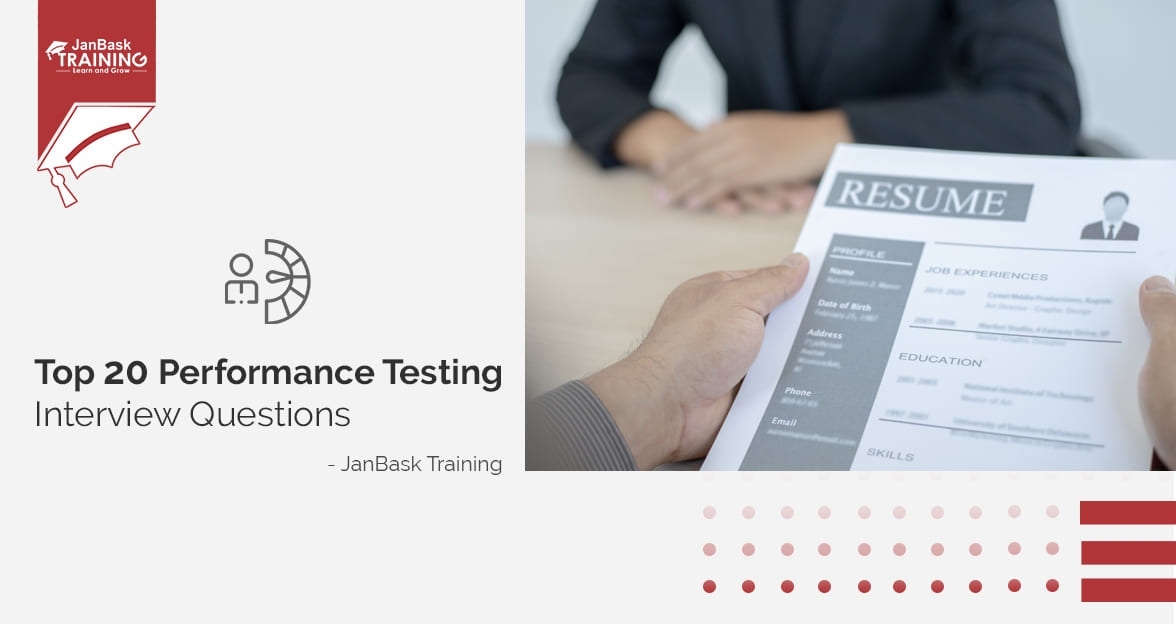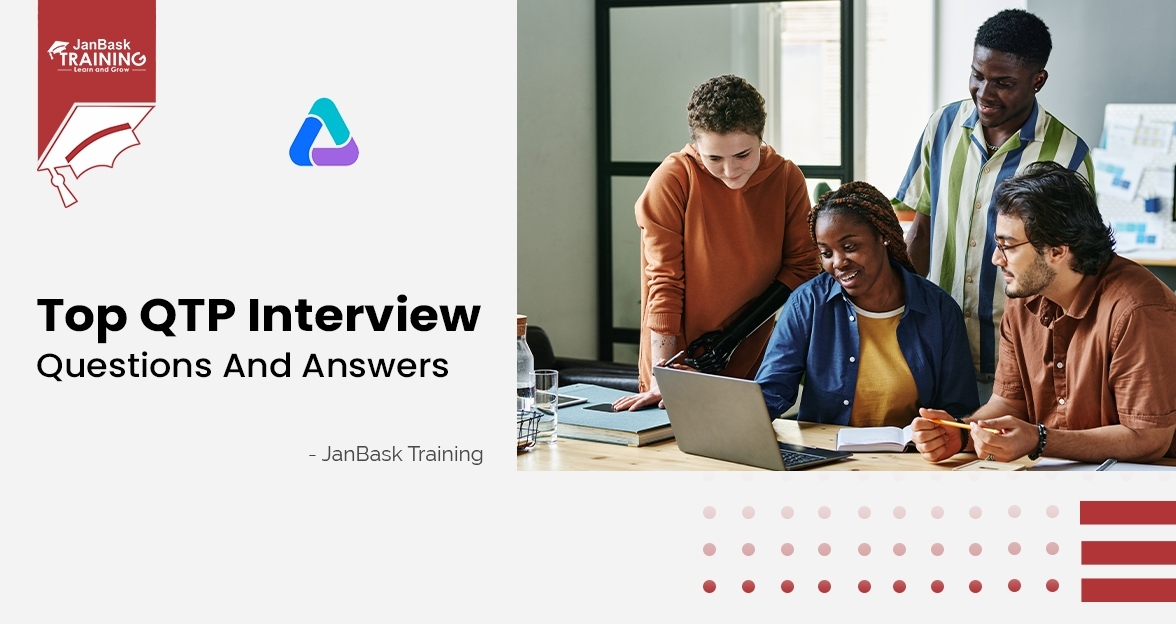 Grab Deal : Upto 30% off on live classes + 2 free self-paced courses - SCHEDULE CALL
Grab Deal : Upto 30% off on live classes + 2 free self-paced courses - SCHEDULE CALL

 Grab Deal : Upto 30% off on live classes + 2 free self-paced courses - SCHEDULE CALL
Grab Deal : Upto 30% off on live classes + 2 free self-paced courses - SCHEDULE CALL

Want a successful career as a manual tester? Make sure you are well-prepped with the topic Software Testing Life Cycle. It is a crucial aspect of manual testing and is frequently asked in interviews. That is why you should practice top Software Testing Life Cycle Interview Questions and Answers that can help you ace your interview and land the dream job you have been looking for. To be more efficient, check out manual testing training and certification. Take your first steps towards a bright future. Now, let us check out the crucial interview questions and the answers.
Ans- Software Testing Life Cycle (STLC) tests software and meets quality standards. In this, tests are carried out systematically over several phases. During product development, the various phases of the STLC may be repeated multiple times until a product is deemed suitable for release.
Ans- Everything you need to know about STLC is covered in these six phases. The 6 primary STLC Phases are:
Ans- The test Planning phase starts soon after the completion of the Requirement Analysis phase. In this phase, the QA manager or QA Lead prepares the Test Plan and Test strategy documents. As per these documents, they also develop the testing effort estimations.
Activities to be done in the Test Planning phase are given below:
Deliverables (Outcome) of the Test Planning phase are:
Ans- Software Development Life Cycle (SDLC) is a process of software development, presented as a set of sequential phases such as:
So, the Software Testing Life Cycle is a part of the Software Development Life Cycle and represents testing activities. A rule of thumb is to have a testing activity for every development activity and to start it as early as possible. For instance, test design for each test level should start in parallel with the corresponding development activity. Learn more about the software development life cycle vs software testing life cycle in detail to gain in-depth knowledge.
Ans- Requirements Analysis – The requirements are gathered, examined, and tested. Issues in Software Requirements Specifications (SRS) are detected. Automation feasibility is evaluated.
Test Planning – In this phase, the test objectives are defined, the test strategy and plan are created, and the test effort is estimated. Tools and resources are then determined.
Test Design – This phase involves designing test cases, creating automation test scripts, and preparing test data.
Test Environment Setup – During this phase, the environment and test data are set up, and a smoke test is usually run to confirm that the environment is ready. This phase is sometimes excluded from STLC, being performed separately, but in some cases, it is not distinguished as a separate phase and is considered part of the Test Design.
Test Implementation – This is when the actual testing takes place. Functional and non-functional types of testing are executed, test cases and test scripts are run, bugs are logged, and test results are reported. Regression testing, bug verification, and closure also belong to this phase.
Test Closure – During this phase, we prepare a test summary report of her test metrics and report them to stakeholders. We also archive the project documents and hold Lessons Learned sessions to improve the efficiency of future projects.

Ans- Anything that doesn’t conform to the criteria of reasonable requirements, such as the following:
Ans- Test closure activities have several goals, such as:
Ans- The exit criteria are defined at the test planning stage and can include the following items which can signify the end of testing activities:
Ans- If it is to be focused on separately, this phase is usually prepared during the Test Environment Setup. If not, this activity usually falls into the Test Design phase. Sometimes, this phase also includes setting up test servers. Once environments are deployed, smoke tests are performed to ensure that environments are working as expected with all intended functionality.
Ans- The Test Execution phase is where the actual testing activities are performed. Functional and non-functional types of testing are executed, test cases and test scripts are run, bugs are logged, and test results are reported. Regression testing, bug verification, and closure also belong to this phase.
Ans- It is recommended that testing activity starts as early as possible in the corresponding SDLC phase. In real life, though, it only sometimes happens this way.
|
Phase of SDLC |
Phase of STLC |
|
|
|
SDLC defines all the standard phases that are involved during the software development process |
STLC process defines various activities to improve the quality of the product. |
|
SDLC is a Development Life Cycle |
STLC is a Testing Life Cycle |
|
In SDLC, the development team creates the high and low-level design plans, |
In STLC, the test analyst creates the System, Integration Test Plan |
|
In SDLC, real code is developed, and actual work takes place as per the design documents, |
In STLC, the testing team prepares the test environment and executes test cases. |
|
The SDLC life cycle helps a team complete the software’s successful development |
the STLC phases only cover software testing. |
Ans- Entry Criteria: This gives the prerequisite items that must be completed before testing can begin.
Exit Criteria: It defines the items that must be completed before testing can be concluded.
Once the entry criteria are met, the testing environment is set up correctly, and test cases and data are ready for execution. The exit criteria in test execution confirm that the test execution phase has been completed according to the defined testing scope and objectives.
While setting the entry criteria, it is also essential to define when the entry criteria item is available to start the process.
Ans- You can perform the test environment setup in sequence or execute it after the requirement analysis phase, as it is independent of all the previous phases. The entry criteria of this phase are requirement documents (both functional and non-functional), system architecture details, defined acceptance criteria, and application design.
Ans- Each test environment or QA Environment is set up with a combination of the following elements:
Ans- The Test Case Development Phase involves the creation, verification, and rework of test cases & test scripts after the test plan is ready. Initially, the test data is identified crea, coded, reviewed, and reworked based on the preconditions. Test cases should be transparent, efficient, and adaptable. Once all test cases are created, test coverage should be 100%. Any necessary automation scripts are also created during this phase. Verifying a test case for testing the conformance of protocol implementations against the formal description of the protocol involves verifying three aspects of the test case: expected input/output test behavior, test verdicts, and the test purpose.
These are the most important and most frequently asked interview questions on STLC. For further reading, look at this post on STLC phases and find answers to some Basic Software Testing interview questions. If a career in quality assurance is your one true dream, you should check out the quality assurance courses and certifications that will boost your career for good.

Top Performance Testing Interview Questions

Top API Testing Interview Questions and Answers

Top QTP Interview Question and Answers

Cyber Security

QA

Salesforce

Business Analyst

MS SQL Server

Data Science

DevOps

Hadoop

Python

Artificial Intelligence

Machine Learning

Tableau
Download Syllabus
Get Complete Course Syllabus
Enroll For Demo Class
It will take less than a minute
Tutorials
Interviews
You must be logged in to post a comment